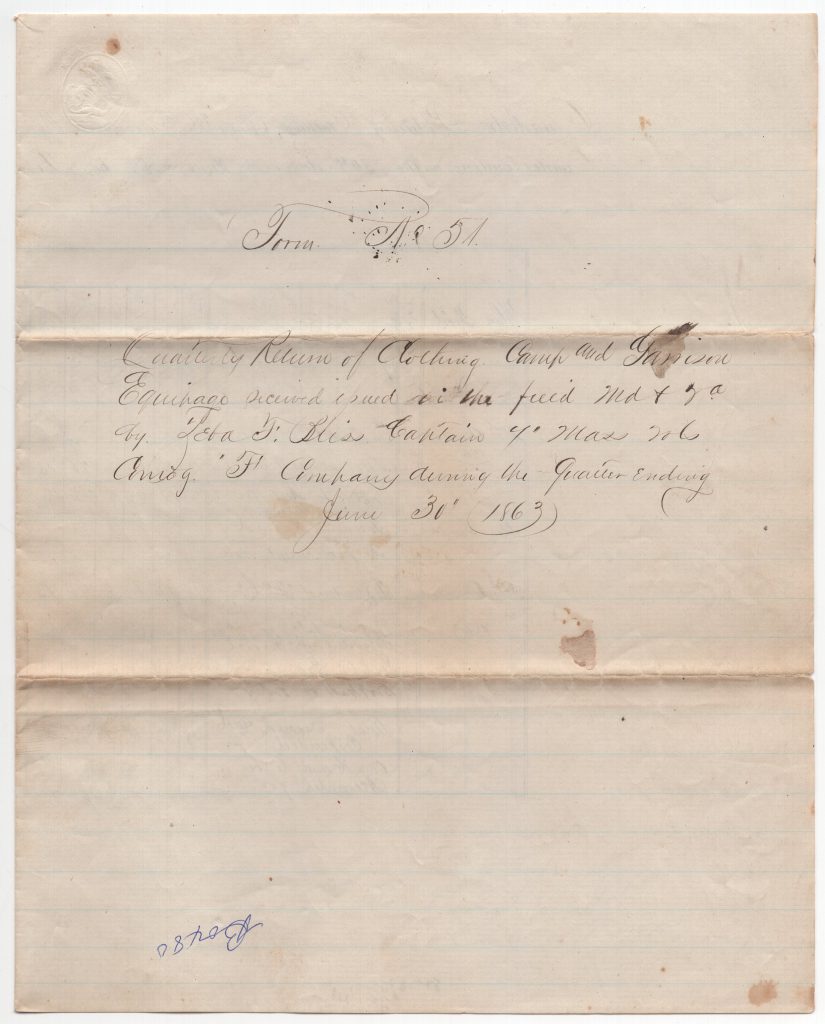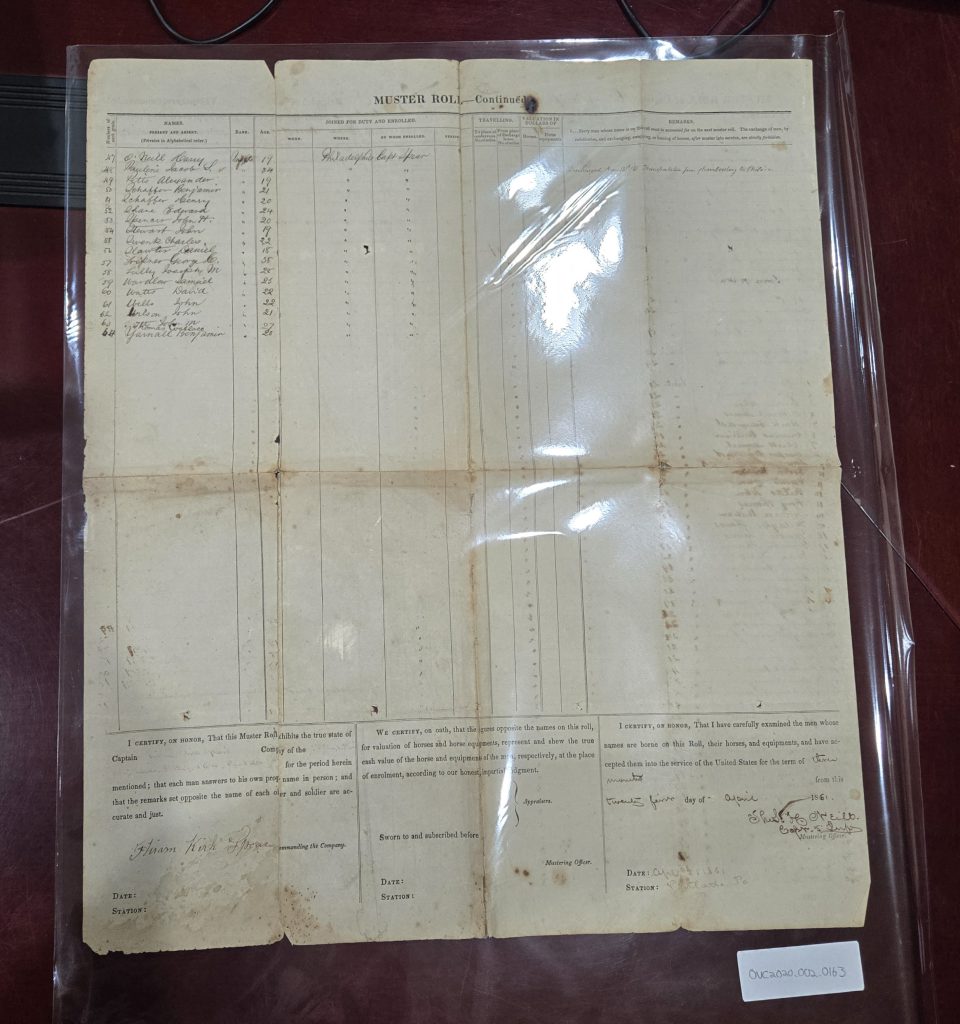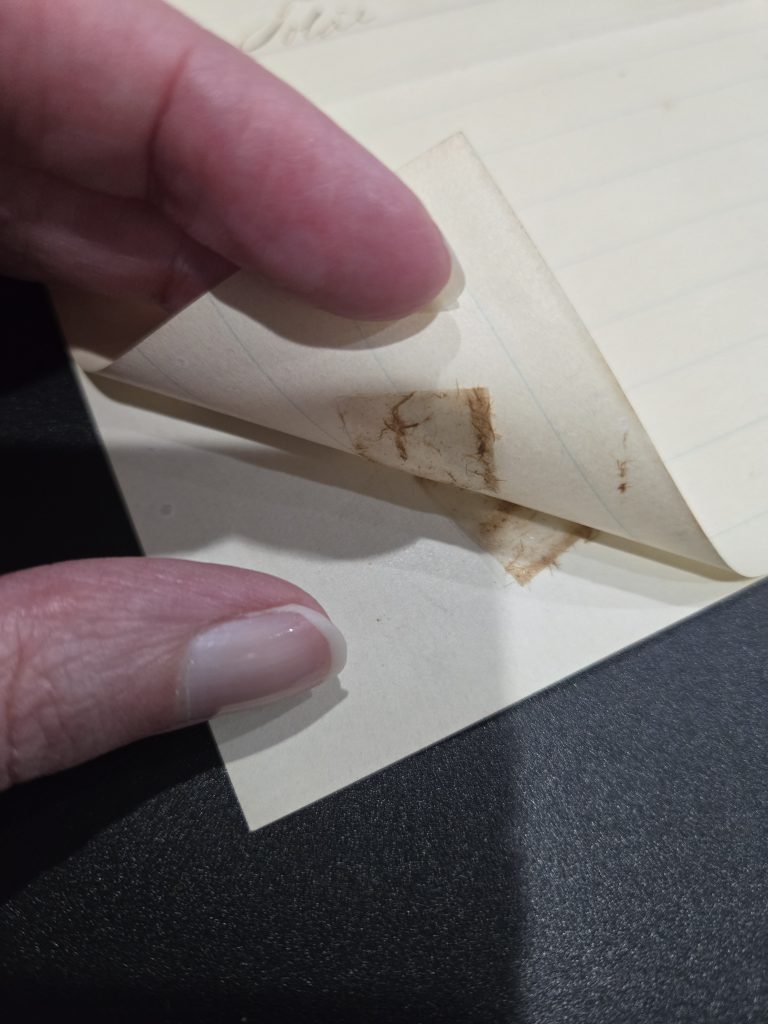Angry Archivist: Disappointments of the Week
Angry Archivist: Disappointments of the Week
This week, we spent a day scanning and cataloging new material for the database, and unfortunately, I found some Angry Archivist disappointments. I thought I’d share them here in the hope that it might discourage folks from doing things like this in the future and also offer some alternatives. I only ended up scanning 40 or 50 documents and found too many things to be angry about in such a small bundle of papers! Ha ha.
Ballpoint Pen

Hello, it’s me again…ballpoint pen, your old nemesis. I know we’ve already had a couple of blog posts about writing on historic documents with ballpoint pens, but here we are again. Honestly, this is one of the most common things I find in dealing with historic documents (the second most common is the next section) and I know that it is not done maliciously, but please, NEVER write on historic documents with ballpoint pen—or any pen for that matter. ALWAYS use pencil because it can be reversed. Any time something original is written on with permanent ink, it damages it. Period. And there is no reason to write on any of these papers with permanent ink. Whether it’s tracing old letters to make them “more legible” or writing notes on them, there is just no reason for it at all, so don’t do it.
Tape

This is the second most common issue I find with historic documents. They are old, they fall apart, so people tape them. Again, please DO NOT tape historic papers. I know they are falling apart, it’s okay. It’s better to have them fall apart than put Scotch tape all over them. Here you can see a Civil War muster roll that is falling apart so it was taped back together, and the tape has discolored and damaged the paper.
Now, if you have a letter, or a muster roll that is falling apart there are a couple of important things to consider. The first: I would be willing to bet you that it is falling apart where the creases are in the document. Again, look at this muster roll and you will see that it is tearing all along the lines of the folds. This leads to another important archival tip: Do not store historic documents folded.
You’ll notice that the muster roll in the photo is now completely flat and stored in an oversized sleeve. That sleeve with the muster roll is currently stored in a large archival box so it can remain flat. There is no more stress on those creases and folds, so it will not continue to fall apart on those seams. If you have letters or other documents that are folded, invest in some sleeves that you can store them in flatly. That will ensure that they do not continue to fall apart.
Tape Part 2

This is a second example of tape that was used on a historic document. Someone took pieces of Scotch tape, rolled them up, and stuck them to the back of the document in each of the four corners so that they could mount it to something. Likely, to the inside of a frame to stop the document from sliding. Then, after some time, the document was removed from the frame, folded in half (which we just learned is bad) and sold. Now the tape has caused the document to stick to itself.
Before I could scan it, I had to very, very slowly peel the tape from the paper. And as I am doing that ever so gingerly, I can see it has discolored the paper. There is no avoiding that. And some of it is still stuck to the paper and needs to be professionally removed by a conservator in order to be fixed. Conservators are very expensive (more expensive than that paper is worth), so now the document has been permanently damaged just because someone didn’t want it sliding in a frame (which probably wasn’t UV safe either so that faded the document) and put tape on it.
Adhesives of any kind—tape, glue, or sticky labels—have NO business on anything historic. Period. I also peeled off a sticky label from seller on a historic photograph this week that took part of the velvet lining in the case off with it. Just don’t do it. Ask yourself if what you want to do is something you’ve seen in a museum. Do you see museum staff tape papers back together? Do you see museums tape historic documents to walls? Do you see museums put sticky informational labels on their artifacts in exhibits? No, you don’t. And if you do, then chances are the person making those exhibits is not actually a trained museum professional. (Small museums with untrained staff is a whole other discussion in itself.)
Folks, if you recognize yourself in any of these examples, please stop. As I’ve mentioned before, when you are a collector or seller of anything historical, you do not own the item in question. You are its caretaker. The goal is to have the item live on beyond you for many years to come, not wither under your care. Please be mindful of simple “quick fixes” using tape or ballpoint pens. And please consider how your items are stored. I know many collectors invest a considerable amount of money into acquiring the items in their collections, please invest the same into caring for them. Leave them better than you found them, or at least no worse off. It breaks my heart to see so many things damaged in this way.

